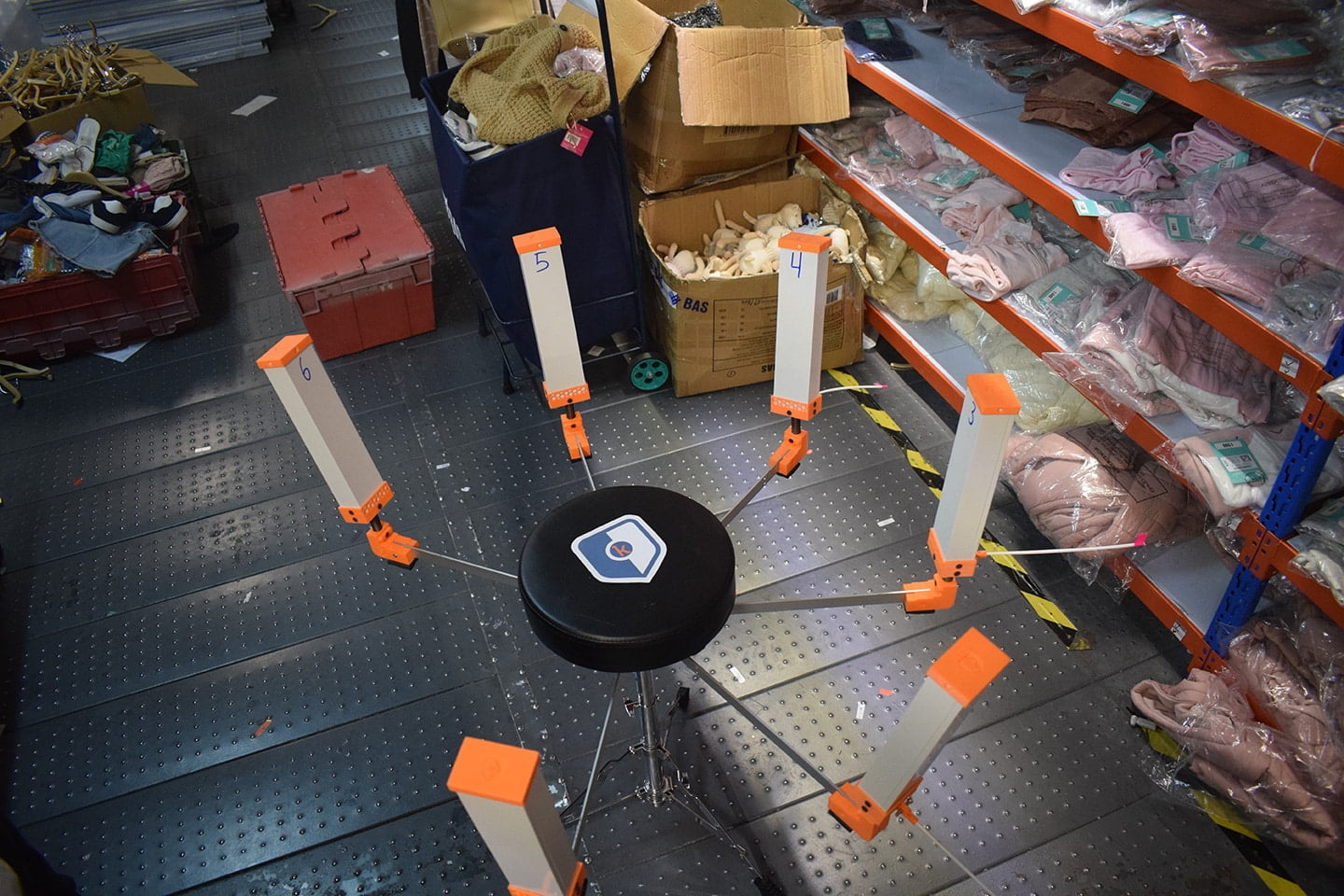Cost-Effective
kshield is a budget-friendly alternative to pricey custom-built RFID tunnels. A total of $2,800 will get you the device plus setup, compared to up to $50,000 for an RFID tunnel. kshield’s lower cost gives you a much quicker return on investment, making it an excellent choice for your bottom line.
Larger facilities will find kshield especially cost-effective, since one kshield device can be moved throughout the space rather than requiring multiple units to cover each area, as is the case with RFID tunnels.
Space-Efficient
If your facility is pressed for space as it is, the idea of installing a cumbersome tunnel is probably not appealing. An RFID tunnel alternative like kshield can solve your scanning problems without taking up a ton of room.
kshield is the size of a small table, so it can fit in the smallest stockrooms. The virtual shielding beacons are attached to stands that fold away when not in use so you can tuck it into a corner and out of the way.
Easy to Use
kshield is easy to use, making it ideal for companies with a large number of employees or a high turnover rate. Employees can quickly learn the process and get up to speed without lengthy training sessions.
To use kshield, you simply:
- Slide the beacon stands out to full length and unfold so they’re standing vertically.
- Log into the ktrac app on your kcode PDA device and scan the label on the workbench to initiate the session.
- Place a box of unscanned items on the swivel base.
- Spin the box while slowly moving the RFID scanner up and down along the sides of the box to scan the tags inside. The beacons will prevent you from accidentally scanning items outside the shield.
- The ktrac app will give you information about the items you’ve just scanned. If everything looks good, sync the scanned tags with the server.
- Replace the box with the next box to be scanned and repeat the previous two steps as needed.
As you can see, kshield lets you scan hundreds of items at a time with practically no learning curve.
Mobile
kshield is significantly smaller and more lightweight than RFID tunnels. This means that instead of requiring multiple stationary units throughout your facility, you can simply move your kshield to where you need it.
Easy Setup
kshield’s small size and simple design make it incredibly easy to set up. No need to find contractors or schedule an installation – you can do it all yourself. This saves you valuable time, allowing you to spend less time on setup and more time getting your inventory scanned.
![]() One of the amazing things about RF (Radio Frequency) technology is the ability for an RFID scanner to read tags through physical barriers without needing either contact or line-of-sight. But if you want to scan a single item or group of items without your tag readers picking up other tags in the vicinity, you’ll need RF isolation to provide shielding. This is usually achieved using a Faraday cage (metal or wire mesh enclosure) or RFID reading tunnels (a metal structure with a conveyor belt and embedded RFID readers)
One of the amazing things about RF (Radio Frequency) technology is the ability for an RFID scanner to read tags through physical barriers without needing either contact or line-of-sight. But if you want to scan a single item or group of items without your tag readers picking up other tags in the vicinity, you’ll need RF isolation to provide shielding. This is usually achieved using a Faraday cage (metal or wire mesh enclosure) or RFID reading tunnels (a metal structure with a conveyor belt and embedded RFID readers)
